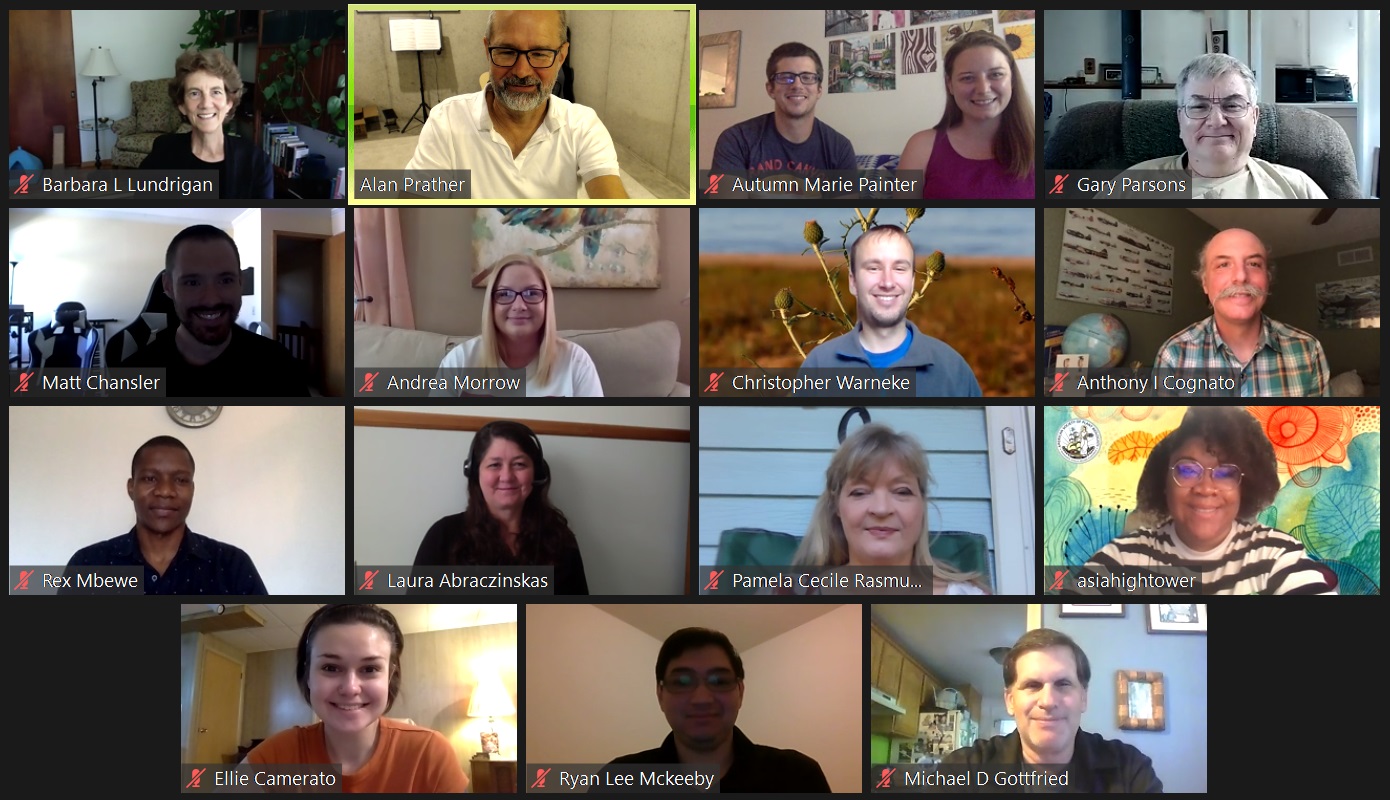MSU is home to many important natural science collections: extensive archives of herbs, mammals, arthropods, fossils, and more. Those responsible for keeping the collections growing in size, organized, and useful for researchers and teachers are experts in their respective disciplines. But most of them never received formal training in the science of collection management itself; one might think of the difference between a scholar who uses the library and the librarian.
Enter the Natural Science Collections Professional Internship. The internship aims to help graduate students develop skills in natural science curation and collections management through interdisciplinary training. These emerging scientists develop practical collections experience during the internship, contributing to MSU’s collections while paving the way for a possible future as archivists and curators .
The program is led by Drs. Alan Prather (Director of the MSU Herbarium), Anthony Cognato (Director of the A.J. Cook Arthropod Research Collections) and Barbara Lundrigan (Curator of Mammalogy & Ornithology, MSU Museum). Participation in the three-month internship required the completion of an application; a $6,000 fellowship was awarded to each. This year, awards were given to eight applicants.
Of course, the pandemic required a new approach to hosting an internship where group discussion and hands-on experience composed the bulk of the experience.
 A screenshot from a previous Natural Science Collections Intern Program meeting.
A screenshot from a previous Natural Science Collections Intern Program meeting.“I was really worried about how it was going to go, but the discussion sections on Zoom were, in some ways, better than last year,” says Dr. Prather. Prather says that online, faculty was conscious about making sure students were the ones driving the conversation. “I thought it was actually an improvement.”
Prather also says that while the hands-on element of collections management is important, there is a never-ending list of tasks related to the collections, and many of those tasks don’t require tactile contact with specimens.
“As it worked out, a lot of students this year were very prepared to do things online,” says Prather. “For all the collections, we ended up getting some things done we might not have otherwise, and the students involved were really involved, and did a great job.”
“The students were very prepared to talk,” says Dr. Lundrigan. She thinks this is actually a side effect of the online environment. “You can hide more easily in the classroom and let other people carry the show. The discussion section this year went very well.”
These discussions are intended to expose interns to both theory and practice; these encompass a wide variety of relevant topics including but not limited to history of collections, preservation, collections use, and digitization. Other experts, including the Collections Managers from participating units, also attended the seminars to share their knowledge and expertise, and allow participating students to see other facets of natural science collections curation/management while expanding their networks.
The specimens in natural science collections provide a critical foundation for research on a wide range of topics, including tracking changes in biodiversity due to global change and anthropogenic disturbance, tracking invasive species and infectious diseases, identification of new taxa, biomechanics, biomimetics, human origins and history, medicine, and agriculture. Natural science specimens are also used extensively in teaching and public outreach, and on a day-to-day basis in applied contexts to identify plants and animals of concern to wildlife managers, natural resource agencies, customs agents, crime investigators, public health agencies, and agricultural agencies.
There are an estimated 2 to 4 billion specimens distributed in institutional natural science collections throughout the world. Although the curation and preservation of these irreplaceable resources are paramount to the advancement of biological knowledge, their stewardship depends on a limited number of specialized workers educated in collection curation and management. Those individuals are almost always graduates of universities with significant scientific research collections, where students have apprenticed with practicing professionals. Michigan State University is one of only a handful of universities in the United States that can offer this very specialized training.
Participating Faculty & Professional Staff:
- Herbarium (Alan Prather, Matt Chansler)
- Arthropod Museum (Anthony Cognato, Gary Parsons)
- Vertebrate collections, MSU Museum (Barb Lundrigan, Mike Gottfried, Pam Rasmussen, Laura Abraczinskas)
- Archaeology/Anthropology collections, MSU Museum (Jessica Yann)
Participating interns:
- Camerato, Ellie - Entomology
- Hightower, Asia - Plant Biology
- Painter, Autumn - Archeology
- Painter, Jeffrey - Archeology
- Mbewe, Rex - Entomology
- McKeeby, Ryan - Earth and Environmental Sciences
- Morrow, Andrea - Integrative Biology
- Warneke, Christopher - Plant Biology


